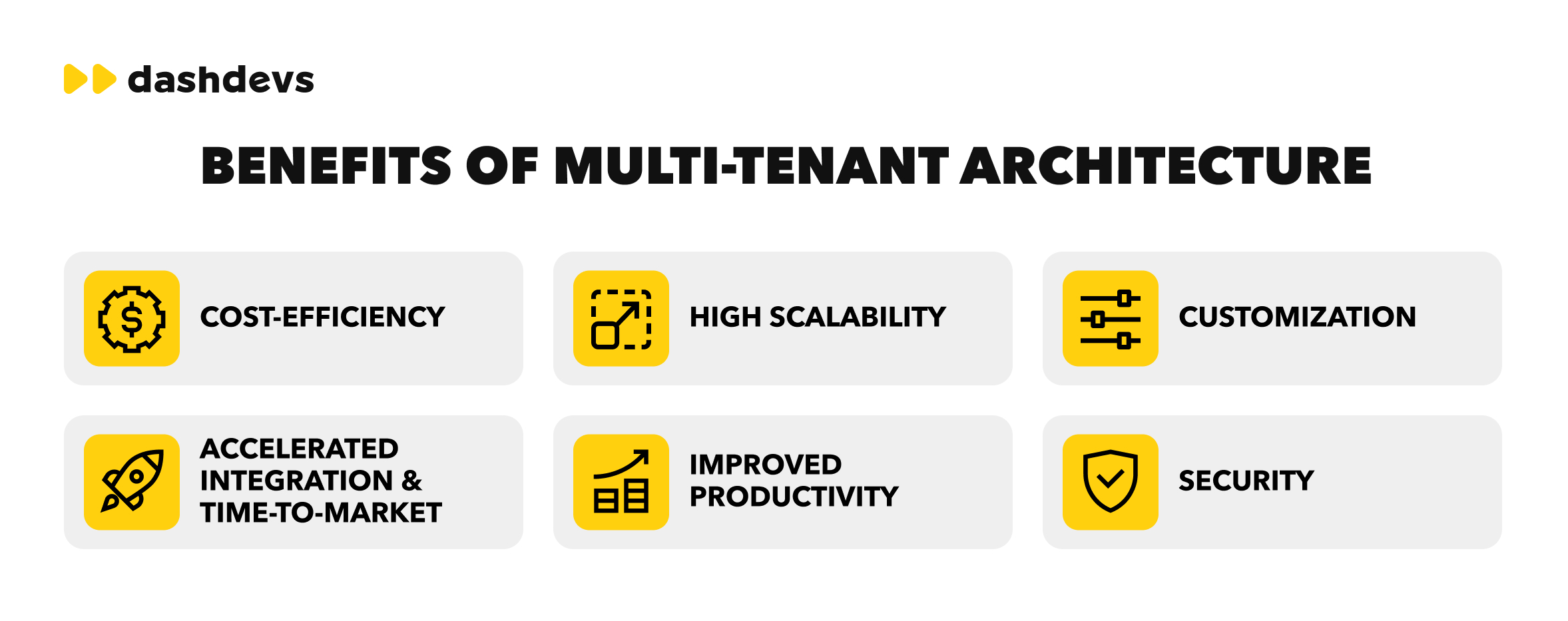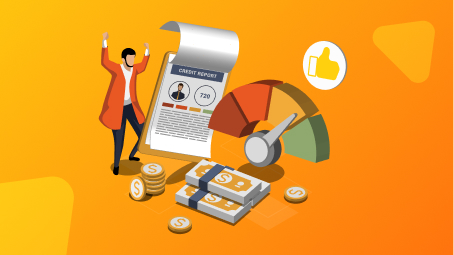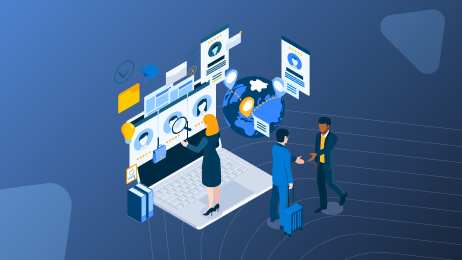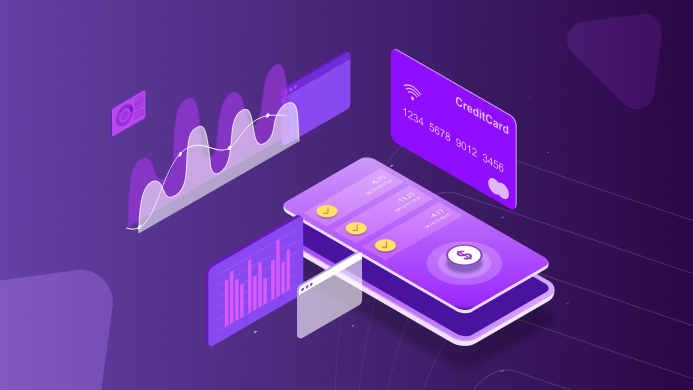OCTOBER 19, 2024
11 min read
Multi-tenant architecture is something undoubtedly powerful that can hold the future in its grip. Every time I have to think of a new application that has complex architecture and needs a quick and scalable architecture, multi-tenancy is the first solution that comes to my mind. I’ve worked with fintechs, telecoms, and other projects that can benefit from such an option, and I feel obliged to explain how multi-tenant architecture can change your business.
First of all, it’s important to note that multi-tenancy usage grows considerably every year, with an 11.1% CAGR between 2024 and 2032 and a USD 37.5 billion market size in 2023. This makes it impossible to deny that this solution becomes a top-tier solution for applications that require a comprehensive way of storing vast amounts of data.
In this article, I will explore multi-tenant architecture, explaining its benefits and how to create an effective application for your business. Let’s get started!
What is a Multi-Tenant Application?
Imagine living in a big apartment building where you have your own unit, with your private space and communal spaces, such as an elevator, a venue, or a parking lot, being used by other tenants. Multi-tenant architecture works in the same fashion.
Multi-tenancy is an approach to software development that seeks to isolate and secure customers’ personal data.
There are several main characteristics of multi-tenant architecture that separate it from other methods of software development or architecture modeling. Among the most prominent are the following:
- Enhanced data security. Encryption isolates each customer’s data from others, so each customer can only access their personal information.
- One application for every end user. The application users utilize does not have separate versions for different users. All of the customers interact with the same code and can have access to the shared information equally.
- Shared server. Although isolated, the application uses one data server for every user’s data. This improves the application’s scalability and drastically reduces the resources spent on maintenance and development.
Benefits of Multi-Tenancy
Of course, a solution such as multi-tenant architecture must have its own benefits. Here, I’ve outlined those that seem the most prominent.

- Cost-efficiency. Multi-tenant architecture is designed to share resources across multiple tenants, eliminating the need to maintain an infrastructure for each tenant. This reduces operational expenses.
- High scalability. The inherent ability of multi-tenant architectures to accommodate growing numbers of tenants without requiring substantial infrastructure changes makes them largely scalable.
- Customization. While sharing resources, multi-tenant architectures also provide flexibility for customization. Tenants can often configure their environments to meet their specific needs and preferences without compromising the overall system’s performance or security.
- Accelerated integration and time to market. Multi-tenant architectures can streamline integration processes and reduce time to market for new applications.
- Improved productivity. This development approach creates a centralized and managed environment that can streamline operations and reduce resource consumption.
- Security. Centralized security management and regular updates can ensure that the entire system is protected against emerging threats. The isolation of data also helps B2B businesses to ensure extra security for users’ data.
Single-Tenant vs Multi-Tenant
I believe that the best way to understand something is through comparison. Hence, I’ve compiled this table to help you understand the drastic difference between single- and multi-tenant architecture.
But before we proceed, let us quickly clarify what a single-tenant architecture is. As opposed to multi-tenant, single-tenant applications, each user basically has their own application that caters to their needs.
| Single-Tenant Architecture | Multi-Tenant Architecture |
| Each tenant has an individual instance within the app, which makes it more complex to scale according to the number of users | Tenants use shared space of the app, while each of them has privately enclosed data, which makes it more forgiving to scale up |
| Each environment is tightly isolated | Only the data is isolated, and the environment is shared |
| Time and resources, as well as hardware, are paid for separately for each tenant | The shared infrastructure nullifies the need to pay separately for each user; resources are spent on a shared environment |
| Each tenant’s updates might come independently | The maintenance is centralized, and updates come out for each tenant at the same time |
| Deployment might be needed for each tenant separately | New tenants might be added after the deployment, which encourages scaling |
In a standalone, single-tenant architecture, each tenant has a complete, independent instance of the application. They can have their own database and infrastructure, which can make such an app overly complex to manage.
In a database per tenant, multiple tenants might share a single application instance, but each has its own dedicated database. This model is a branch of a classical multi-tenant approach that offers a balance between cost and security. It is what we’ve been discussing so far and the approach I believe to be one of the most efficient.
Shared multitenant can be seen as a more classical approach, where a single application instance and a common database are shared between different tenants. It requires fewer resources and time, but it might have more security issues in the long run.

Challenges of Developing Multi-Tenant Applications
Perfect solutions do not exist, and so multi-tenancy also has its own shortcomings. During my extensive career and research, I’ve found a few of the most vicious challenges to be the most often encountered. Let’s talk about them in more detail.
Data Isolation
Multi-tenant architecture’s main point is data isolation, so it has to be carefully maintained and sought. It’s imperative to ensure that tenants do not have access to each other’s private data. To do so, your tech team can divide the data on the database level or add metadata to each dataset to guide the system to its correct owner.
Client Configuration Management
In a B2B multi-tenant application, different tenants might have different requirements for the application’s functionality and settings. This can act as a significant constraint for configuration management. If you implement configuration at the deeper level of application data files, where each set would be stored separately for each tenant, you could enable your clients to autonomously change their configuration.
Zero-Downtime Updates and Deployments
Since the application serves multiple tenants, it is necessary to minimize downtime during updates. If you don’t, there’s a risk of negative impact on clients’ business processes. Implement canary deployment strategies. It would help update systems without completely stopping the service. It is also worth setting up automated tests to ensure stability.
Support for Multiple Currencies and Localization
One of the biggest benefits of multi-tenant architecture is its scalability to new markets, but it also presents the challenge of multiple currency support. Multi-tenant applications often serve clients in different countries, requiring support for various currencies, languages, and legal requirements. If you implement localization and internationalization features, you will be able to flexibly handle different currencies and tax systems.
Developing a Multi-Tenant Application with a Software Development Team
If you end up thinking that a multi-tenant application is exactly what you’ve been looking for, then the process of developing one should be your next point of interest. I’ve gathered the most important tips based on my experience to give you an insightful overlook of what you can expect from multi-tenant architecture development.
#1 Planning
The planning stage is essential for multi-tenant as it sets the stage for all future steps. My best tip for this stage is to account for future changes your business might go through, such as scaling to other countries that might have different regulations. Just as I mentioned in the challenges, this might become a significant bottleneck to your business’ growth if not sorted out in time.
When thinking about scaling, you should also consider that more tenants would mean a heavier load for your app. To overcome this constraint, you should consider talking to your development team about using containers (e.g., Docker) and orchestrators (e.g., Kubernetes) for dynamic resource management.
#2 Technology Stack
Technology stack is important for any product, but for multi-tenant architecture development, it can even be drastic. A mistake in forming the stack for your project can lead to unforeseen circumstances, such as not being able to ensure proper data isolation and scalability or failing to enable proper customization.
This is why I’ve compiled a list of technologies that would most likely help your technical partner develop an unyielding multi-tenant architecture for your business.

- AWS, Azure, GCP. These cloud platforms can provide a scalable and reliable infrastructure for multi-tenant applications.
- PostgreSQL, MySQL, MongoDB. These databases often offer flexible data storage options and support for data partitioning and isolation between tenants.
- ASP.NET Core, Spring Boot, Express.js, Django. This selection of frameworks would help your team achieve a more structured approach to building multi-tenant architecture capable of enhanced security and scalability.
- Docker and Kubernetes are the best microservices for enabling modular application architecture and facilitating independent service development and deployment.
- Redis and Memcached are the best caching technologies for storing frequently accessed data in an app’s memory.
- RabbitMQ, Kafka. If you need to enable asynchronous processing and improved scalability, talk to your tech partner about using this stack of queues to decouple components within the application.
- Duende IdentityServer, Keycloak, Auth0. This tech stack for identity management provides centralized authentication and authorization services.
- Kong, AWS API Gateway, Nginx. Use these gateways to manage API traffic, enforce security policies, and provide a single entry point for multiple tenants.
#3 Designing an Architecture
Designing an architecture is arguably the most lengthy step, as this is the core of creating the multi-tenant architecture as it is. So, I suggest you take into account, first and foremost, the data model you choose for your app. Tenant data can be stored either in a single database or divided into multiple databases (multi-tenant vs. multi-instance). It is important to decide how data isolation will be ensured:
- Single database: All tenants use a common database, but data is identified by unique keys. It would be easier to implement but needs an extra touch of security. To add additional security, you can consider access control or data encryption.
- Separate databases: Each tenant has their own database. The opposite of the previous one, this option would provide better isolation and flexibility but complicate management and scaling.
A software development process for multi-tenant architecture requires more considerations, as it is a complex step that requires a detailed approach. If you’re interested in it, you can always contact us or check DashDevs’ development services for solution architecture.
#4 Testing
Multi-tenant architecture requires a rigorous testing process as it heavily relies on extreme security measures and scalability options. To ensure that, you can run pen-testing or perform other methods of quality assurance. Pen-testing, however, might be more recommended for enhanced security in the current context.
#5 Deployment
For effective deployment of multi-tenant applications, choose a suitable deployment strategy. Among them are:
- Blue-green deployment is a deployment strategy in which two identical production environments are maintained. The “green” environment is the current production environment, and the “blue” environment is used for testing the new application version. When the new version is approved, the “green” environment changes to “blue”.
- Canary deployment is a strategy of gradually introducing a small subset of users (the “canary group”) to the application or its new versions.
- Rolling deployment involves deploying to a subset of servers and gradually increasing the number of servers running the new version until all servers are updated.
As always, it is important to continuously monitor the application’s performance, health, and resource usage and respond in a timely manner to any constraints or concerns.
Real-life Multi-Tenancy Examples
Multi-tenancy in real life is quite a popular architecture structure and is being used in many apps that intend to enable data sharing. For example, they might be applicable for:
- Cloud storage solutions
- Gambling applications
- Streaming services
- Banking solutions
- Streaming services
Netflix, Dropbox, Salesforce, and others are among the most popular solutions that come to mind when I think of multi-tenant architecture. I have also had the opportunity to work on several multi-tenant projects, and I will discuss one of them in this section.
Salesforce
Salesforce is a customer relationship management platform with 150,000 active users. The solution has proved valuable for businesses of different sizes and automated business processes in sales, customer service, and related departments for clients.
Salesforce’s multi-tenancy mainly lies in the fact that it runs on a single instance of the software but simultaneously serves different customers. Each customer has their own data privately contained within the platform. However, when the software reaches an update, all customers receive one, which makes the maintenance of the solution much more efficient.
Dropbox
Dropbox is a cloud storage service that also enables seamless file sharing. Currently, it has over 700 million users in 180 countries. The application enables users to store their files, connect storages together, and share files between them. It can also synchronize between different devices and possess a set of other useful features.
Dropbox’s multi-tenant architecture allows numerous users to store and manage files independently. Every user’s account is an independent space with designated protection, but all of them share a common infrastructure. This way, file sharing can be enabled via the assignment of permissions from one user to another, and all the private data is enclosed and secured.
Gambling App NDA
I’ve worked with multi-tenancy applications before, and the most memorable case from my own practice was a gambling application that decided to opt for multi-tenant architecture to enhance security and enable seamless scaling.
The application’s multi-tenancy allowed users to keep the personal data needed for gambling in their personal profiles, which were neatly protected spaces. This served well as a data protection solution and allowed for quicker time to market as all users still shared the same infrastructure.
However, they made the mistake of not accounting for their plans in the initial planning stage and discovery phase. Hence, when they scaled to a new market, the team encountered problems associated with regulations. We’ve managed to solve the issues and successfully launch the application in a new country; however, the time and resources spent outweighed the initial estimate.
To avoid such a problem, I advise you to consider legal aspects. If your application will operate in multiple countries, it is crucial to be aware of regulatory requirements such as GDPR in the EU. This is especially important when handling user data and ensuring its security.
Final Thoughts
Wrapping up, it’s important to note that multi-tenant architecture is a great way to achieve security and scalability, but only in cases where a thorough analysis was performed beforehand. Every new technology introduced to your software should be thoroughly reviewed and analyzed before you settle for it. In the case of multi-tenant architecture, my advice is to try to predict your software’s growth and align the architecture design with it.
If you’re interested in multi-tenant architecture development, you can personally contact me or our team. DashDevs gathered senior development experts and has been creating software solutions for over 14 years now. We’ve delivered 500+ projects and would be happy to help you with yours. Let’s discuss it.








